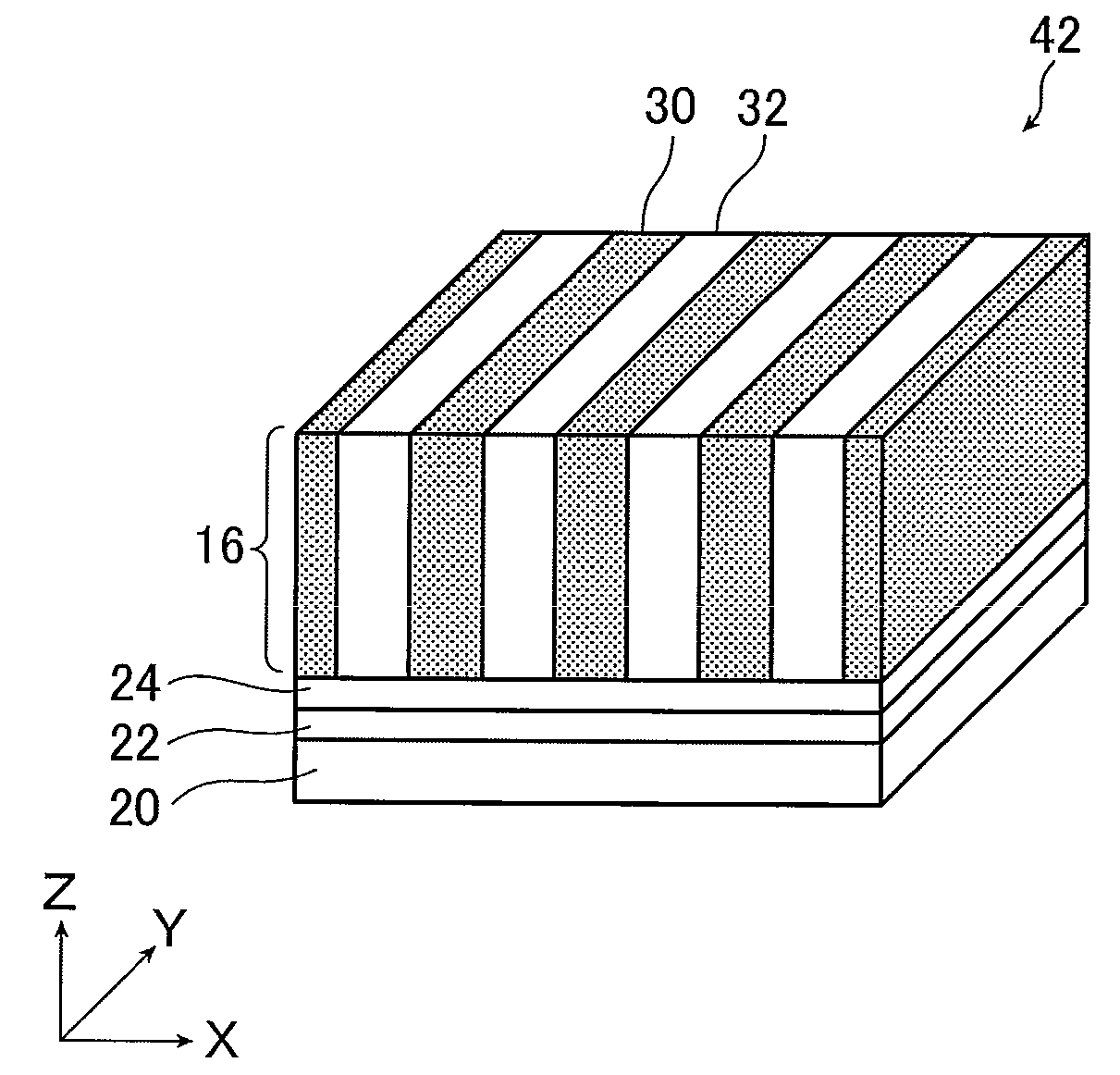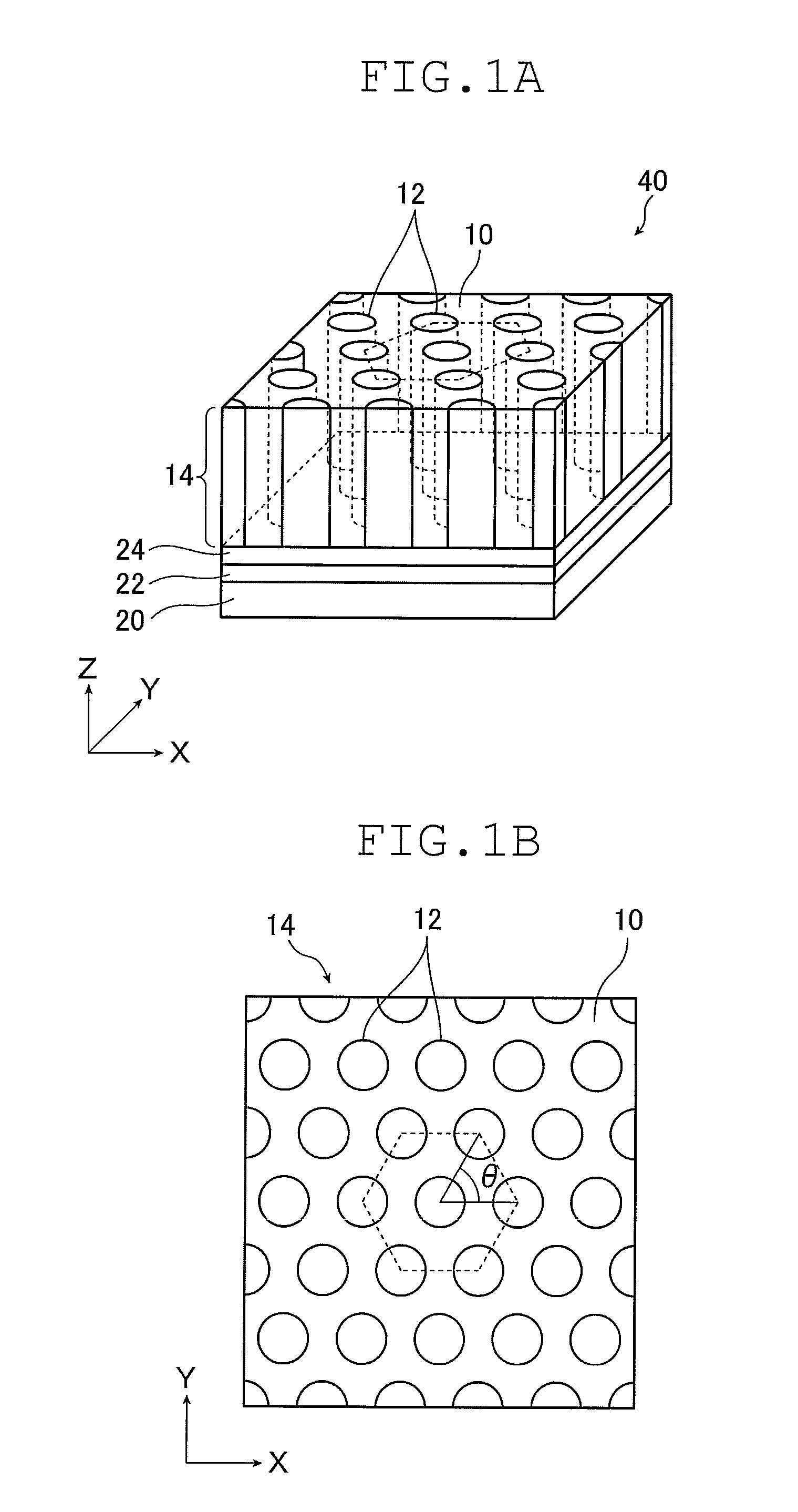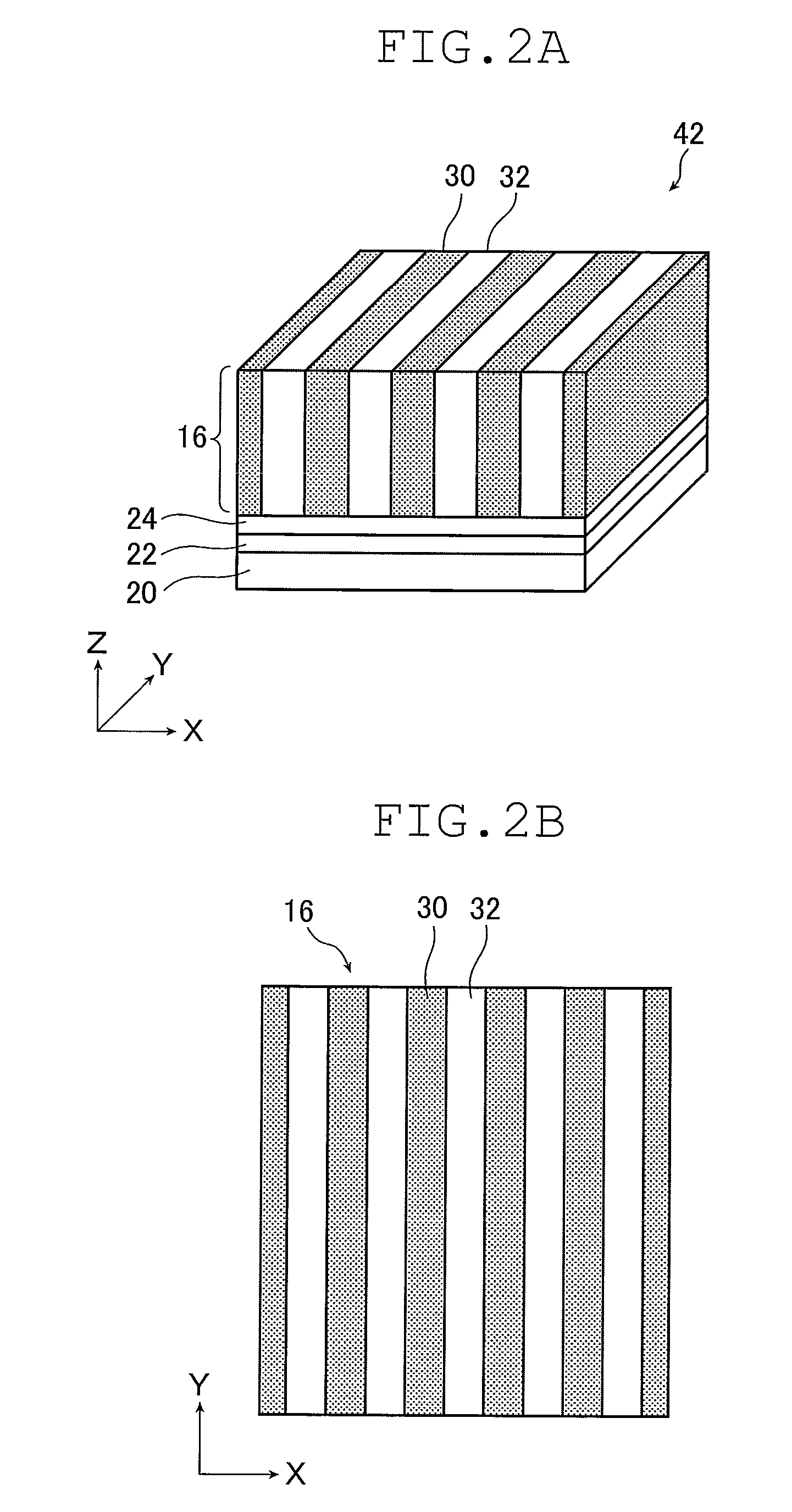Microphase-separated structure on flexible substrate, and method of manufacture thereof
- Summary
- Abstract
- Description
- Claims
- Application Information
AI Technical Summary
Benefits of technology
Problems solved by technology
Method used
Image
Examples
example 1
[0096]A SiO2 layer (thickness, 50 nm) was formed by vapor-depositing SiO onto a polyimide (PI) film (Upilex-50S; Ube Industries, Ltd.) in an oxygen atmosphere. The surface roughness of the SiO2 layer was 0.91 nm. Following vapor deposition, the film was immediately immersed in a 1.0 wt % toluene solution of octadecyltrimethoxysilane (Gelest, Inc.) and left at rest for one day. The film was then rinsed with toluene and dried, thereby creating a surface-modified polymer substrate 1 on which a layer formed with a silane coupling agent had also been deposited. The layer formed with the silane coupling agent was a monomolecular layer. Assuming the thickness of this layer to be about the chain length of one molecule of the silane coupling agent, from calculations with WinMOPAC (Ver. 3.9.0), the layer thickness was estimated to be about 2.6 nm. Following surface modification, the contact angle with water was 97±6°. The difference between the surface tension of polystyrene (PS) with the sub...
example 2
[0098]A SiO2 layer was formed by vapor-depositing SiO onto a polyimide (PI) film (Upilex-50S; Ube Industries, Ltd.) in an oxygen atmosphere. The surface roughness of the SiO2 layer was 0.91 nm. Following vapor deposition, the film was immediately immersed in a 1.0 wt % toluene solution of methoxyphenylpropylmethyldichlorosilane (Gelest, Inc.) and left at rest for one day. The film was then rinsed with toluene and dried, thereby creating a surface-modified polymer substrate 2 on which a layer formed with a silane coupling agent had also been deposited. The layer formed with the silane coupling agent had a thickness, determined by the method described in Example 1 above, of about 1.3 nm. Following surface modification, the contact angle with water was 81±6°. The difference between the surface tension of polystyrene (PS) with the substrate and the surface tension of polymethyl methacrylate (PMMA) with the substrate was 0.1 mN / m.
[0099]A 10.0 wt % toluene solution of PS-b-PMMA (available...
example 3
[0100]A copper layer (thickness, 50 nm) was created by electron beam (EB) vapor-depositing copper onto a polyimide (PI) film (Upilex-50S; Ube Industries, Ltd.) in a vacuum. The film was taken out into the open air, and the surface roughness was measured and found to be 1.08 nm. The film was left to stand out in the open air overnight to allow the surface to oxidize, following which the film was immersed in a 1.0 wt % toluene solution of octadecyltrimethoxysilane (Gelest, Inc.) and left at rest for one day. The film was then rinsed with toluene and dried, thereby creating a surface-modified polymer substrate 3 on which a layer formed with a silane coupling agent had also been deposited. The layer formed with the silane coupling agent had a thickness, determined by the method described in Example 1 above, of about 2.6 nm. Following vapor deposition, the contact angle with water was 21±4°. Following surface modification, the contact angle with water was 107±10°. The difference between ...
PUM
| Property | Measurement | Unit |
|---|---|---|
| Thickness | aaaaa | aaaaa |
| Flexibility | aaaaa | aaaaa |
| Surface roughness | aaaaa | aaaaa |
Abstract
Description
Claims
Application Information
 Login to View More
Login to View More - R&D
- Intellectual Property
- Life Sciences
- Materials
- Tech Scout
- Unparalleled Data Quality
- Higher Quality Content
- 60% Fewer Hallucinations
Browse by: Latest US Patents, China's latest patents, Technical Efficacy Thesaurus, Application Domain, Technology Topic, Popular Technical Reports.
© 2025 PatSnap. All rights reserved.Legal|Privacy policy|Modern Slavery Act Transparency Statement|Sitemap|About US| Contact US: help@patsnap.com



